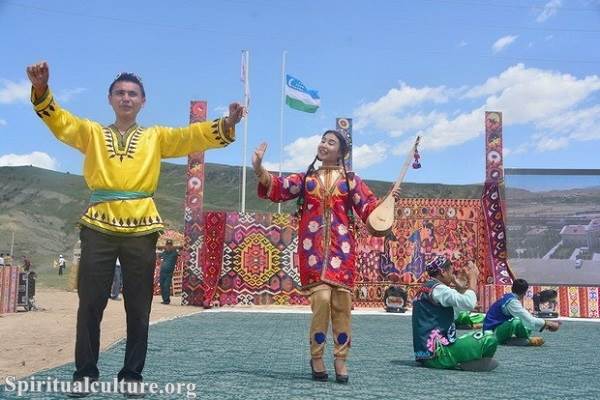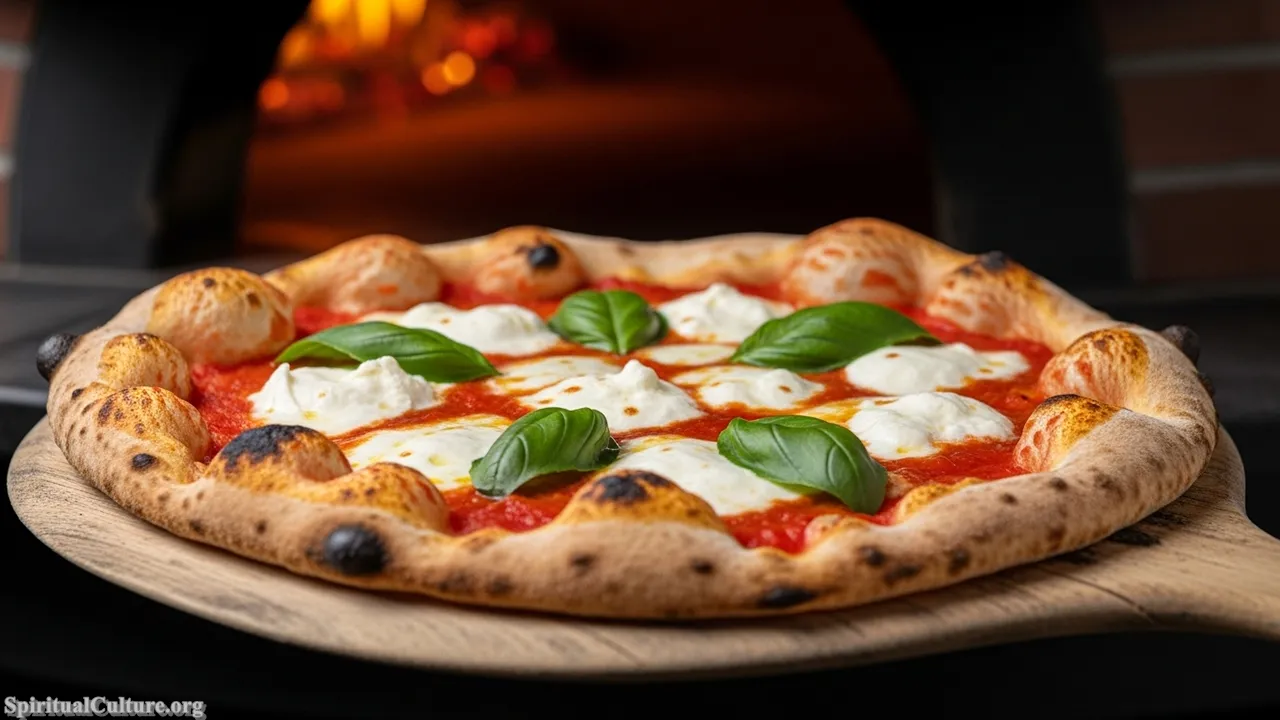Germany’s landscape is a breathtaking tapestry woven with nearly 25,000 castles, ruins, and palatial residences, each one a stone-carved testament to a thousand years of shifting European power, artistry, and spirituality. These structures are not merely architectural marvels; they are repositories of deep cultural memory, where medieval defense strategies transitioned into Enlightenment ideals, and where kings sought refuge, sanctuary, and a physical manifestation of their divine right to rule. As of the Current Time of Writing, these monumental sites continue to serve as the spiritual and historical backbone of the nation, drawing millions to contemplate the legacies of emperors, reformers, and “fairy-tale” kings.
At Spiritual Culture, we believe the true value of heritage lies not just in its age or beauty, but in the profound Spiritual Impact it has made on the course of human history and imagination. Our ranking moves beyond simple popularity, emphasizing the architectural embodiment of German idealism, the role these structures played in pivotal religious and political movements, and their status as officially recognized World Heritage Sites.
The following list celebrates the castles and palaces that most successfully transformed stone and mortar into symbols of eternal cultural and spiritual significance, all verified with data current to the Current Time of Writing.
Table of the Top 10 German Castles and Palaces by Cultural and Spiritual Impact
| Rank | Name of Site | Location (State) | Primary Era/Style | Key Spiritual/Cultural Significance | UNESCO World Heritage Status |
|---|---|---|---|---|---|
| 1 | Neuschwanstein Castle | Bavaria | 19th-Century Romanesque Revival | King Ludwig II’s Romantic/Wagnerian Temple to the Holy Grail | Inscribed (as ‘Palaces of King Ludwig II’) – July 2025 |
| 2 | Wartburg Castle | Thuringia | Medieval/Romanesque/Gothic | Sanctuary of Martin Luther’s Bible Translation (New Testament) | 1999 |
| 3 | Sanssouci Palace and Parks | Brandenburg | 18th-Century Rococo | Frederick the Great’s retreat; embodiment of enlightened philosophical rule | Part of ‘Palaces and Parks of Potsdam and Berlin’ (1990) |
| 4 | Würzburg Residence | Bavaria | 18th-Century Baroque/Rococo | One of Europe’s most spectacular Baroque palaces and centers of clerical power | 1981 |
| 5 | Heidelberg Castle | Baden-Württemberg | Gothic/Renaissance Ruin | Iconic symbol of German Romanticism and national resilience | Candidate to UNESCO Tentative List |
| 6 | Schwerin Castle | Mecklenburg-Vorpommern | 19th-Century Romantic Historism | Seat of the Grand Dukes; famed for its ‘Petermännchen’ protective spirit legend | 2024 |
| 7 | Hohenzollern Castle | Baden-Württemberg | Gothic Revival | Ancestral seat of the Imperial House of Hohenzollern and Prussian Kings | None |
| 8 | Charlottenburg Palace | Berlin | Baroque | Berlin’s largest and most significant surviving palace complex | None |
| 9 | Eltz Castle (Burg Eltz) | Rhineland-Palatinate | Medieval/Romanesque | One of the few castles in the Rhine region never destroyed, held by one family since the 12th century | None |
| 10 | Kaiserburg Nürnberg (Nuremberg Castle) | Bavaria | Medieval/Romanesque | Residence of the Holy Roman Emperors and symbol of Imperial Power | None |
Top 10. Kaiserburg Nürnberg (Nuremberg Castle), Bavaria
The Imperial Castle of Nuremberg, or Kaiserburg Nürnberg, sits as an enduring monument to the Holy Roman Empire, a political and spiritual entity that shaped Europe for a millennium. Dating back to the 11th century, it was one of the most important imperial residences (Kaiserpfalzen), a necessary stop on the Emperor’s itinerary, and a symbolic anchor for the medieval German kingship. While not a current UNESCO site, its role in hosting Imperial Diets and safeguarding the Imperial Regalia—the crown jewels of the Holy Roman Empire—secures its place as a profound repository of German political and spiritual history.
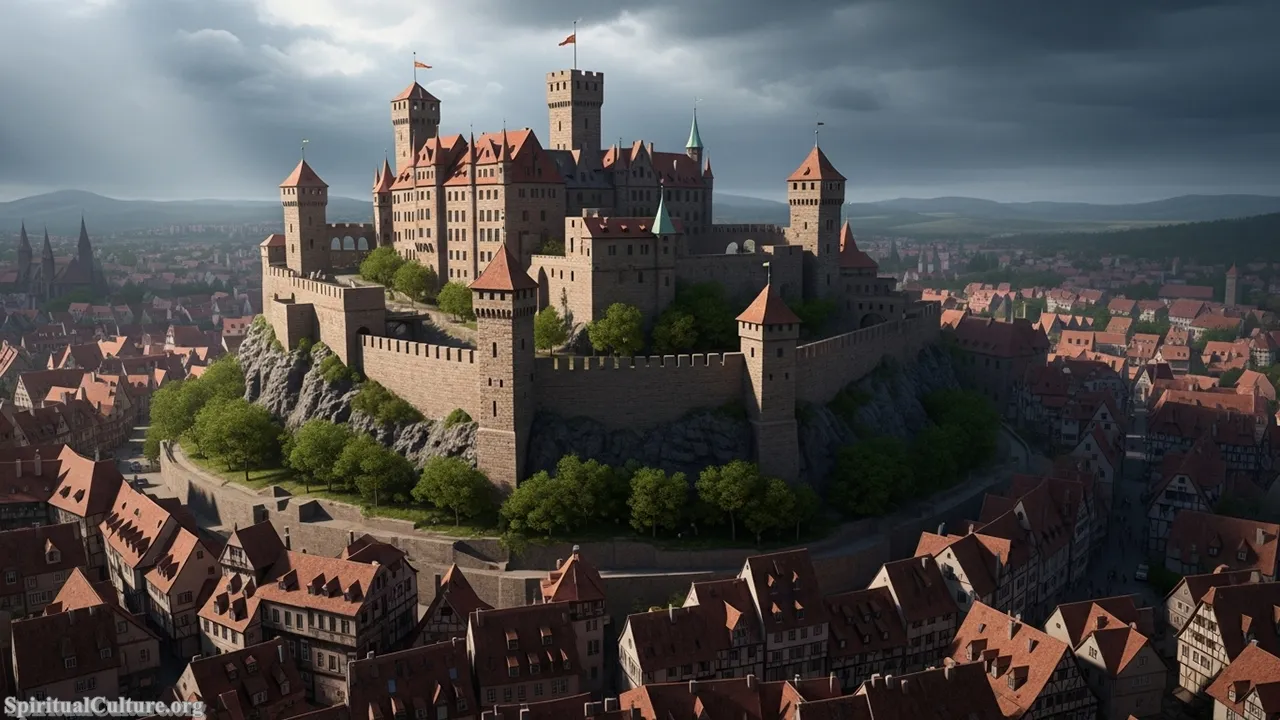
Its spiritual and cultural significance is rooted in its function as a temporary, divinely sanctioned seat of power, reinforcing the concept of sacred kingship. Nuremberg itself, often called the “unofficial capital” of the Holy Roman Empire, was a crucible of art, science, and trade during the late Middle Ages, and the castle above it was the physical and administrative heart. The presence of the Imperial Regalia within its walls for a time infused the fortress with an almost religious gravity, symbolizing the continuity and authority of the Empire, which claimed direct succession from Rome’s Christian Emperors.
The Kaiserburg, overlooking the city, is a potent reminder of the cyclical nature of power and the importance of place in defining a spiritual identity. It teaches that true heritage is tied to responsibility; its enduring stone walls silently witness the ebb and flow of empires, urging contemporary practitioners of culture and faith to maintain the ethical foundation upon which civilisations are built.
Cultural/Spiritual Highlights:
- Safeguarded the Imperial Regalia (Crown Jewels) of the Holy Roman Empire for centuries.
- Site of numerous Imperial Diets, central to medieval governance and law.
- Double Chapel (Doppelkapelle) dating to the 13th century, symbolizing the hierarchical structure of the Empire.
Top 9. Eltz Castle (Burg Eltz), Rhineland-Palatinate
Nestled deep in the hills above the Moselle River, Burg Eltz is the quintessential medieval knight’s castle, unique in its almost flawless preservation from the ravages of war. Construction began as early as the 12th century, and remarkably, it has been owned by the same family—the Eltz family—for over 850 years. This continuity in a region constantly contested by foreign powers makes it a true anomaly and a powerful icon of ancestral loyalty and private, enduring heritage, a rare cultural feat still maintained as of the Current Time of Writing.

The spiritual impact of Burg Eltz is one of stability and resilience in a world of change. Its unique position as a Ganerbenburg, a castle jointly inhabited by multiple branches of the same family, speaks to a deeply ingrained Germanic cultural value of kinship and shared stewardship. While lacking the explicit religious significance of a cathedral, its survival symbolizes the enduring, quiet power of the family unit and tradition—a kind of secular monasticism devoted to preservation, inspiring an awe that borders on the spiritual.
To walk the grounds of Burg Eltz is to connect with a living thread of history unbroken since the High Middle Ages. It is a lesson in the profound beauty of stewardship, reminding us that heritage is not merely something to be consumed, but to be protected and passed down. The dedication of the Eltz family offers a compelling moral lesson in long-term commitment to a shared cultural treasure.
Cultural/Spiritual Highlights:
- Remarkable 850+ years of continuous ownership by the same family.
- Survived all major European conflicts, including the wars of the 17th and 18th centuries.
- A pristine example of a Ganerbenburg (joint-heritage castle), reflecting ancient kinship values.
Top 8. Charlottenburg Palace, Berlin
As the largest palace in Berlin, Charlottenburg Palace stands as the definitive monument to the Baroque aspirations of the Prussian Hohenzollern dynasty, built primarily for Queen Sophie Charlotte, the wife of Elector Frederick III (who became King Frederick I). Commenced at the end of the 17th century, the complex is a sprawling masterpiece of architecture and garden design, representing the dramatic shift from defensive castles to grand, open-style royal residences that defined the European Enlightenment. It remains a central cultural institution for the German capital as of the Current Time of Writing.
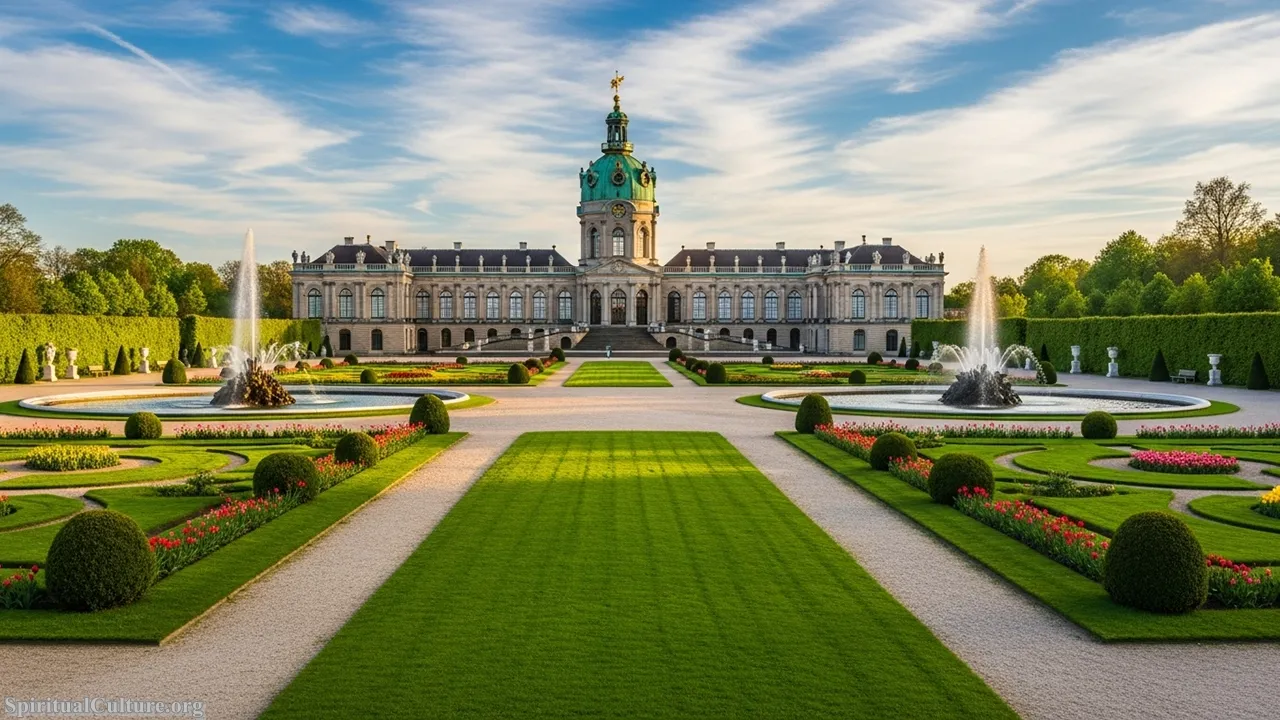
The spiritual significance here is tied to the concept of Enlightened Royalty and the pursuit of knowledge. Queen Sophie Charlotte was a patron of the arts and sciences and the palace was a vibrant hub for intellectual discourse. Unlike the overtly religious sites, Charlottenburg’s influence is secular and humanistic, reflecting the era’s focus on reason, aesthetics, and sophisticated courtly life—the temporal spiritual pursuit of beauty and order. Its lavish Chapel and state rooms show the intertwining of divine sanction with earthly glory.
The palace’s elegant, reconstructed forms serve as a crucial cultural anchor in the dynamic metropolis of Berlin. The commitment to rebuilding and restoring this palace after its near-total destruction in WWII is a powerful reflection of the German people’s dedication to reclaiming and celebrating their cultural identity, urging contemporary society to value restoration and remembrance.
Cultural/Spiritual Highlights:
- Largest and most influential surviving royal palace in Berlin.
- Early 18th-century center of Prussian intellectual and cultural life.
- Symbol of the humanistic and aesthetic values of the Enlightenment era.
Top 7. Hohenzollern Castle, Baden-Württemberg
Perched majestically atop Mount Hohenzollern, this dramatic Gothic Revival castle is the ancestral seat of the House of Hohenzollern, the dynasty that produced the Kings of Prussia and the German Emperors. The current structure, built between 1846 and 1867, is actually the third castle on the site, conceived by King Frederick William IV of Prussia as a monument to his dynasty’s greatness and a highly visible cultural symbol for the German lands in the Current Time of Writing.

Hohenzollern Castle’s entire purpose is spiritual and dynastic symbolism. It is the ultimate architectural expression of the Prussian Ideal—a combination of military might, devout Protestant piety, and absolute monarchical authority. Its strategic, commanding location is designed to inspire awe, visually manifesting the concept of a dynasty whose power was ordained from above. It acts as a pilgrimage site for those studying the history of German unity, reminding visitors of the singular familial force that unified the nation.
The enduring image of Hohenzollern, often shrouded in mist, teaches a powerful lesson about the weight of ancestry and the formation of national identity. It encourages a reflection on how lineage and deep-rooted tradition—whether familial or cultural—can provide a foundation for collective aspiration, even across vast historical epochs.
Cultural/Spiritual Highlights:
- Ancestral seat of the Hohenzollern dynasty, which ruled Prussia and the German Empire.
- Built as a dynastic monument to assert the family’s historical and spiritual legitimacy.
- The treasury holds significant artifacts, including the Crown of Wilhelm II.
Top 6. Schwerin Castle, Mecklenburg-Vorpommern
Schwerin Castle, often called the “Neuschwanstein of the North,” is a breathtaking Romantic Historism palace set on an island in the eponymous lake. Its current appearance is predominantly the result of a mid-19th-century rebuilding, transforming the site of a millennium-old Slavic fortress and later ducal residence into a magnificent symbol of ducal authority and romantic fantasy. Reflecting its deep cultural value, the castle and its surrounding ensemble were officially inscribed as a UNESCO World Heritage Site in 2024.

The castle’s spiritual impact is distinctively rooted in Germanic folklore and regional identity, most famously through the legend of Petermännchen (Little Peter). This benevolent but mischievous ghost is said to guard the castle’s treasures, punishing the wicked and rewarding the kind, making the structure a focal point for local spiritual belief and storytelling. This cultural mythos elevates the palace from mere residence to a place where the veil between the historical and the magical is thinnest, a beautiful expression of the Germanic Romantic soul.
Schwerin’s beauty, mirrored perfectly in the calm waters of the lake, invites contemplation on harmony and balance—the physical reflection of the castle symbolizing the spiritual reflection of the self. The legend of the Petermännchen reinforces a powerful moral code where good deeds and respect for the sanctuary are paramount, a timeless cultural lesson.
Cultural/Spiritual Highlights:
- UNESCO World Heritage Site (2024) recognizing its architectural ensemble.
- Central to Northern German regional identity and Romantic-era architecture.
- Famed for the legend of the protective castle spirit, the Petermännchen.
Top 5. Heidelberg Castle, Baden-Württemberg
Dominating the city skyline, Heidelberg Castle is arguably the most famous ruin in the world, embodying the dramatic sweep of German history from its first mention in 1225 through its destruction in the wars of the 17th century. This former residence of the Electors Palatine, featuring a dynamic blend of Gothic and Renaissance styles, became the ultimate muse for the 19th-century German Romantic movement. As a powerfully emotive ruin, it symbolizes the fleeting nature of earthly power and the endurance of spiritual feeling.

Heidelberg’s spiritual significance lies in its power as a romantic relic—a picturesque symbol of national tragedy and subsequent rebirth. The ruin inspired poets and philosophers, making it a pilgrimage site for those who sought to define the German soul during the age of nationalism. Its broken walls speak volumes about the vulnerability of cultural greatness, turning a military defeat into an enduring monument to the German spirit’s ability to find beauty and profundity in decay and reflection.
The enduring image of Heidelberg Castle teaches that loss itself can become a source of profound spiritual and artistic inspiration. Its current, stabilized state as a ruin reminds us that honoring the past doesn’t require pristine restoration, but rather a reflective engagement with the scars of history, a lesson crucial for the preservation and understanding of all cultural heritage.
Cultural/Spiritual Highlights:
- Iconic symbol of the 19th-century German Romantic movement.
- Former residence of the powerful Electors Palatine, a center of Renaissance culture.
- Home to the famous Great Vat (Heidelberg Tun), symbolizing extravagant courtly life.
Top 4. Würzburg Residence, Bavaria
The Würzburg Residence, described by Napoleon as “the most beautiful parsonage in Europe,” is a masterpiece of South German Baroque architecture, completed in 1744 as the seat of the Prince-Bishops of Würzburg. As a UNESCO World Heritage Site since 1981, this palace is a testament to the immense wealth and temporal power of the Roman Catholic Church’s prince-bishops, who were not only spiritual leaders but also powerful rulers of their territories.
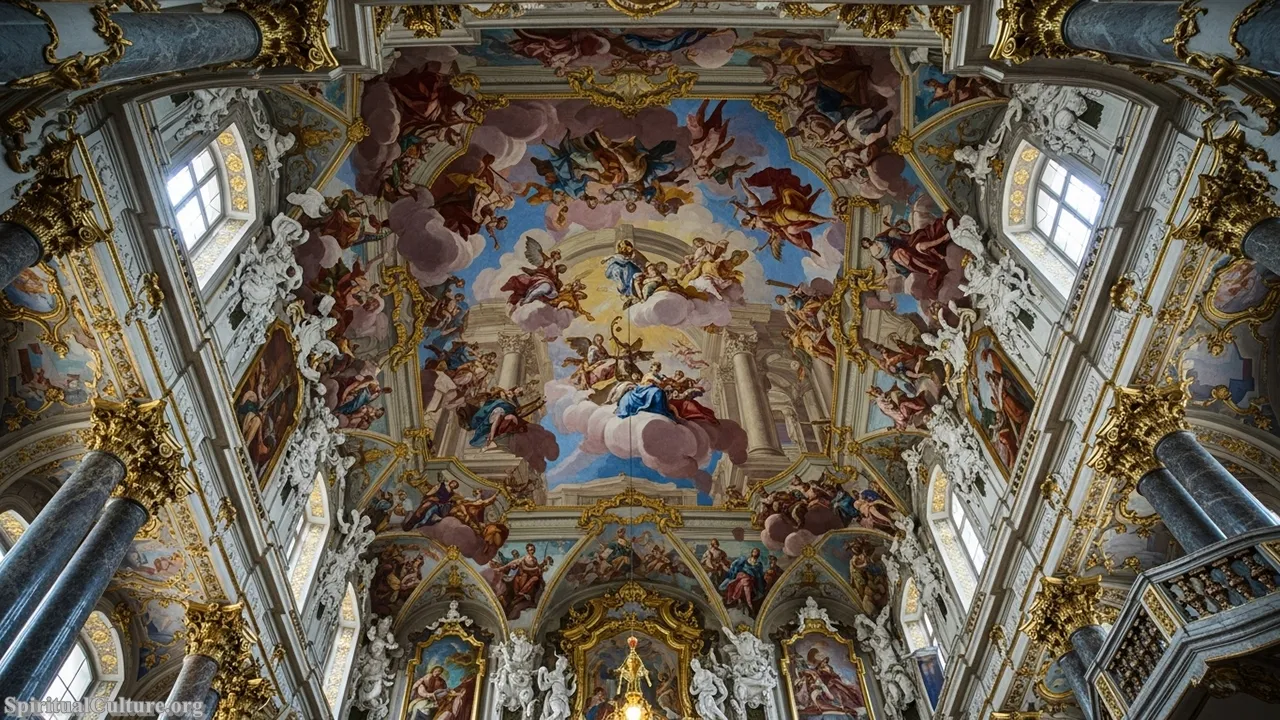
Its spiritual impact is the architectural manifestation of the Counter-Reformation’s fervor and the divine-right assertion of the clerical state. The Court Chapel and the Imperial Hall, featuring frescoes by Giovanni Battista Tiepolo, demonstrate a visual sermon on the glory of God and the Prince-Bishop. It is a space where the political and the pious are inseparable, offering an extravagant visual experience meant to inspire reverence and reinforce the spiritual-secular hierarchy of the age.
The palace’s miraculous restoration after its near-total destruction in World War II is a modern spiritual lesson in commitment to cultural heritage. It stands as a vibrant symbol of resilience, showing that a community can resurrect even the most complex and damaged cultural treasures, ensuring the spiritual and aesthetic ideals of the past continue to inspire the Current Time of Writing.
Cultural/Spiritual Highlights:
- UNESCO World Heritage Site (1981) recognized as a Baroque masterpiece.
- Former seat of the powerful Prince-Bishops, reflecting clerical and political authority.
- Features the world’s largest ceiling fresco, painted by G.B. Tiepolo, celebrating divine and earthly glory.
Top 3. Sanssouci Palace and Parks, Brandenburg
Sanssouci Palace in Potsdam, the former summer retreat of King Frederick the Great of Prussia, is one of the most significant examples of the intimate German Rococo style. Built from 1745 to 1747, its name, French for “without a care,” perfectly encapsulates its spiritual purpose: a private sanctuary for a monarch who saw himself primarily as a philosopher and musician. The entire ensemble, including the vast surrounding park, is a UNESCO World Heritage Site recognized since 1990.
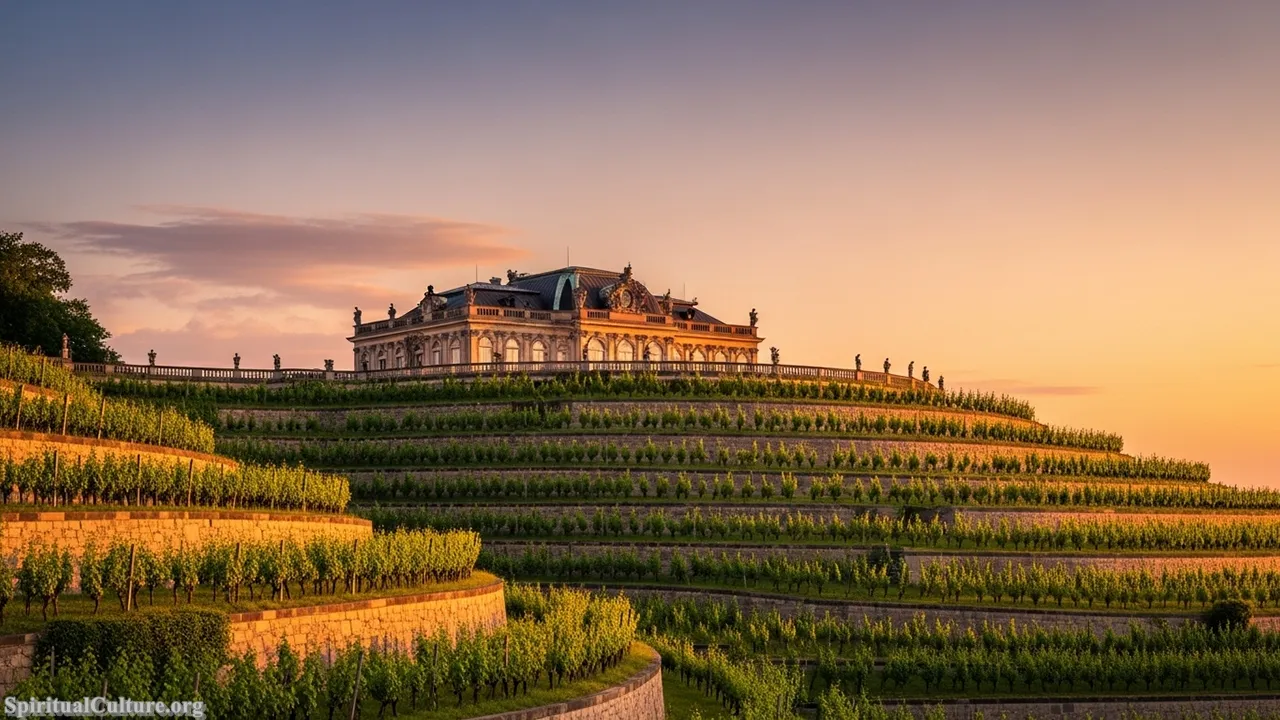
The palace’s spiritual impact is its embodiment of Enlightened Absolutism. Unlike the political grandeur of Versailles, Sanssouci is a temple to the individual’s intellectual and creative life, reflecting Frederick’s belief that a ruler is merely the “first servant of the state.” The architecture, nestled gracefully on a vineyard terrace, promotes a lifestyle free from the burden of courtly ceremony, making it a sacred space for personal reflection, humanistic inquiry, and artistic pursuit—a uniquely Protestant and pragmatic view of sovereign spiritual retreat.
Visiting Sanssouci today, with its intimate rooms and the simple grave of Frederick the Great—buried alongside his beloved greyhounds—offers a profoundly humanistic moral lesson. It teaches that true leadership and spiritual fulfillment can be found in intellectual honesty and the prioritization of personal well-being over ostentatious display, a timeless message for modern society.
Cultural/Spiritual Highlights:
- Frederick the Great’s deeply personal summer retreat, a temple to philosophy and music.
- A foundational monument of Prussian and German Enlightenment thought.
- Its name, “Sanssouci” (“without a care”), defines its spiritual purpose as a retreat from duty.
Top 2. Wartburg Castle, Thuringia
Crowning a steep hill above Eisenach, Wartburg Castle is one of Germany’s most profoundly significant strongholds, a UNESCO World Heritage Site since 1999 that spans nearly a thousand years of history. Its foundational role in Germanic culture, however, was sealed between 1521 and 1522, when it served as the refuge for Martin Luther after the Diet of Worms, allowing him to launch the most significant religious revolution in European history.

The spiritual impact of Wartburg is unparalleled, making it a true cultural monument of the Reformation. It was in the castle’s small Lutherstube (Luther’s Room) that the reformer translated the New Testament into German, a revolutionary act that democratized faith, helped forge the modern German language, and fundamentally reshaped the spiritual landscape of Europe. The castle is not merely a residence; it is the birthplace of modern German religious and linguistic identity, a sanctified space for the propagation of Christian reform.
The Wartburg stands as a timeless monument to the moral and spiritual power of the printed word and individual conviction. Its powerful, preserved medieval walls offer a concrete lesson in courage, reminding us that the greatest changes—be they political, spiritual, or cultural—often begin in quiet solitude with an act of radical translation and profound faith, a legacy that endures powerfully in the Current Time of Writing.
Cultural/Spiritual Highlights:
- The exact location where Martin Luther translated the New Testament into German (1521-1522).
- The translation was foundational to the standardization of the modern German language.
- Site of the legendary Sängerkrieg (Singers’ Contest), central to German medieval literature.
Top 1. Neuschwanstein Castle, Bavaria
Neuschwanstein Castle, the Romanesque Revival palace high in the Bavarian Alps, is arguably the most famous castle in the world, the inspiration for Disney’s Sleeping Beauty Castle and the ultimate icon of German Romanticism. Built from 1869 by King Ludwig II, the “Fairy Tale King,” it was never intended as a political seat, but as a deeply personal monument to medieval German culture and the operas of Richard Wagner, making it a sanctuary for the King’s idealized, spiritual vision of kingship. Reflecting its massive cultural weight, the palaces of Ludwig II, including Neuschwanstein, were officially inscribed as a UNESCO World Heritage Site in July 2025.
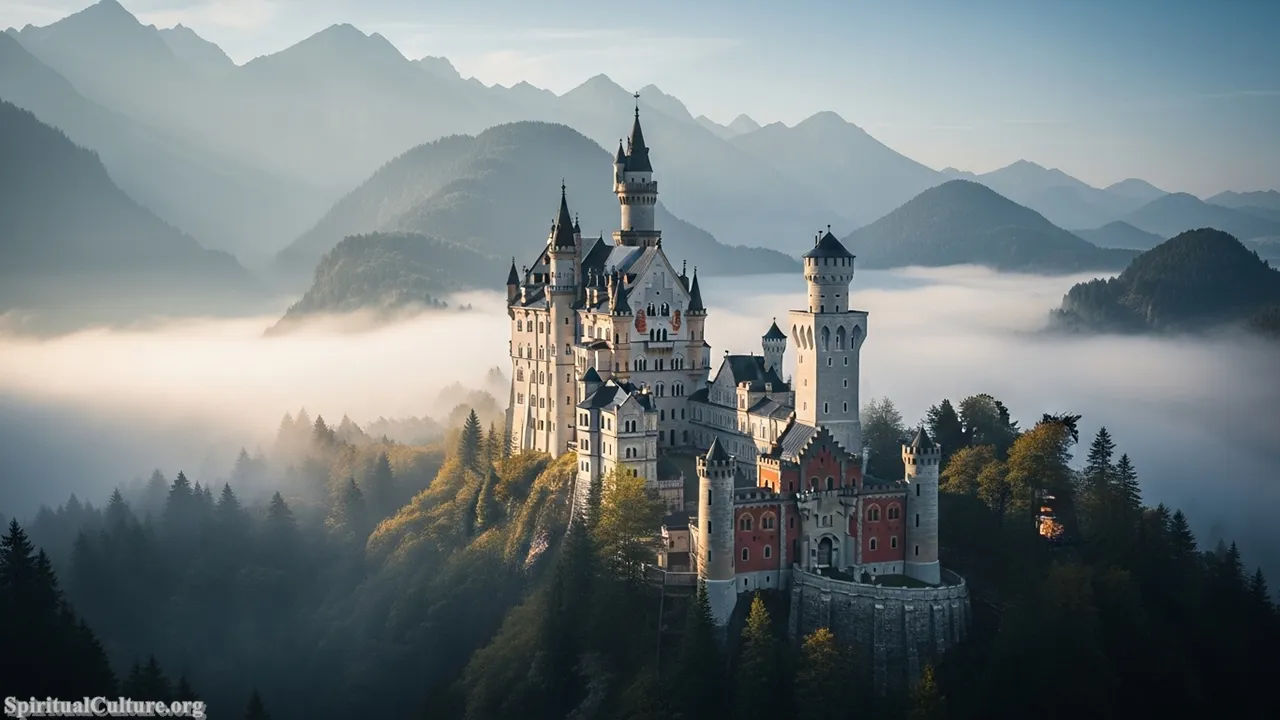
Neuschwanstein’s supreme spiritual impact comes from its function as a temple of human idealism and the Holy Grail mythos. Ludwig II, increasingly isolated and identifying with the Arthurian Grail King Parzival, designed the palace as a sacred reflection of Wagnerian music drama. The Throne Hall, though lacking a finished throne, was conceived as the Hall of the Holy Grail, a Byzantine-inspired consecration space dedicated to the divine right of Christian kings. This fusion of mythology, piety, and the King’s desperate need for an authentic spiritual sovereignty secured its place as the paramount architectural expression of German cultural romanticism.
The castle remains a global pilgrimage site not for its history as a military fortress, but for its role as a glorious, tragic symbol of a ruler who chose art and spiritual fantasy over political reality. It offers a profound reflection on the power of the human imagination to create a perfect world in stone, a lesson that our deepest spiritual yearnings often find their most enduring form in artistic, cultural creation, a feeling fully alive in the Current Time of Writing.
Cultural/Spiritual Highlights:
- UNESCO World Heritage Site (2025), a global icon of Romantic architecture.
- Built as a private, sacralized retreat by King Ludwig II, the “Fairy Tale King.”
- The Throne Hall was conceived as the “Hall of the Holy Grail,” dedicated to Christian kingship.
- Interiors are entirely dedicated to Germanic legends and the operas of Richard Wagner.
Conclusion
The castles and palaces of Germany are much more than tourist attractions; they are the enduring cultural cathedrals of the nation. From the profound historical and linguistic legacy safeguarded in the walls of Wartburg to the soaring, tragic idealism of Neuschwanstein, these sites collectively narrate the spiritual journey of the German people. They teach us that human heritage is a continuous, living dialogue between medieval devotion and modern reason, between political power and personal sanctuary.
At Spiritual Culture, we celebrate these stone sentinels for the profound moral lessons they contain: the importance of resilience (Heidelberg), the virtue of stewardship (Burg Eltz), and the transcendent power of creative vision (Neuschwanstein). To visit these magnificent structures is to engage in a pilgrimage, connecting the present moment of the Current Time of Writing to the deep, resonant heart of European history and spirituality.

